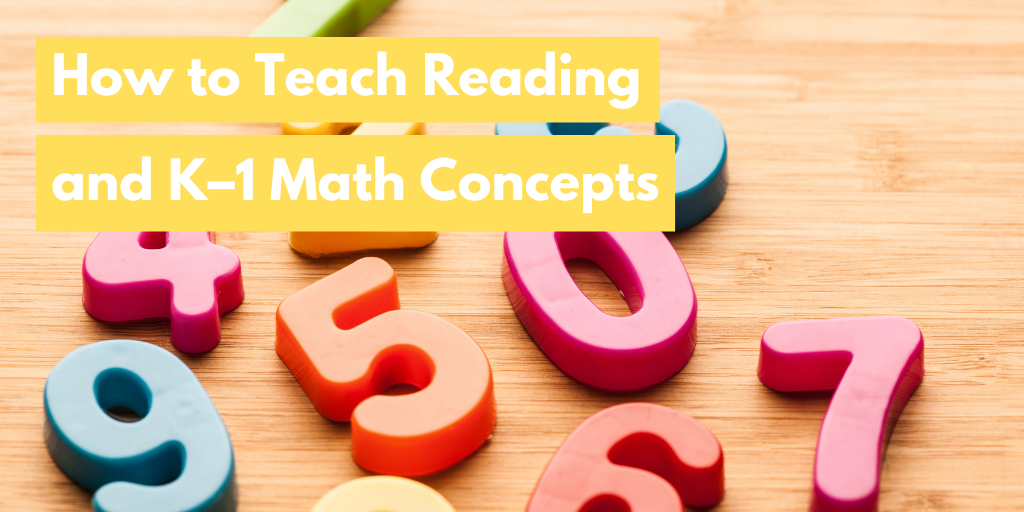Editor's Note: This blog was previously published, we're re-sharing it today during the Holiday season.
By Paula Dugger, M. Ed., Guest Blogger
Do you feel like there's not enough time to teach a class of kindergartners or first graders how to read and write and teach math? Keep reading if you're searching for ways to help students enjoy learning how to read, write, and practice math concepts with low-level readers.
Integrating reading and math helps kids make real-world connections. It helps students understand the reasoning behind math and connections to everyday things around them. Learning becomes fun and entertaining for the students when you go beyond rote memory activities by using a leveled reader.
In today's post, I'll provide examples of activities you can use with three guided reading books from the Kaleidoscope Collection to teach math concepts. Leveled readers in this post are intended for kids who are reading at kindergarten and first-grade levels. Keep reading to find out how easy it is to build content-area literacy about math concepts.
Practice Counting with Level B Informational Texts
Buttons is a nonfiction book for kids about counting from one to six, using different colored buttons. With supportive pictures and simple sentence structure, this book is excellent for kids who need practice reading. The content of the book also lets you practice math by counting objects and identifying different colors. To reinforce both reading and math skills after reading Buttons , you can try the following guided reading lesson that incorporates writing. Use large chart paper for a whole group activity or handmade books for individual students and small groups. Give students a variety of items to count, such as crayons, M&M candies, counting cubes, beads, or buttons. Let them count out and sort the items into groups and rewrite the story. Here's an example of something you can write on chart paper as students practice retelling the story:


Throughout the year, you can have kids continue rewriting this guided reading book by adding new numbers and items. For holiday-themed lessons, you can also use Valentine's Day hearts, or snowflakes, to practice counting.
The process of learning how to associate the word two with two objects can be complex for children. Luckily, the leveled book Two uses parts of the body to explain the meaning of two by showing children things they are familiar with. The repetitive sentence structure and supportive photographs make this an easy-to-read and useful book for kids who need practice reading and developing number concepts.
Here are some activities you can use to extend learning after reading Two .
- Have a discussion with kids about things that come in twos.
- Give students several minutes to search the classroom to find two of the same things and return to the group to share.
- Improve vocabulary by introducing the word pair to describe things that come in twos. Then have kids share things they think of that come in pairs.
- Create books using the same type of writing activity mentioned earlier in the blog to reinforce high-frequency words and the meaning of the word two in Two .
Teaching Shapes with a Level D Informational Text
Baseball Shapes is a level D is a fun informational book that will get you off to a great start with teaching geometric shapes. Most children entering reading at this level may have some prior knowledge of playing baseball, softball, T-ball. Helping kids make real-world connections while looking at shapes will also help them identify meanings of shape words, such as diamond and pentagon .
Making shape books is an activity that you can use to help students practice learning about specific shapes. Each shape can have its own book, or you can create a book identifying the shapes of different signs on the road. This will help kids connect shapes to real-world things while they practice reading and writing skills. Below is an example of sentences you can use for text in a hand-made book about road signs.

When you have the right books, integrated lesson planning for math instruction, along with reading and writing activities, isn't so hard. Children need to have repeated opportunities to make real-world connections to strengthen reading skills and math strategies.
Be sure to visit our blog soon for ideas to help students practice second-grade math concepts with fun informational texts at levels K–L.
~~~
 Paula is an educational consultant who has previously served as a Reading Recovery Teacher/Teacher Leader, first grade teacher, Title I and high school reading teacher, and a Reading Coordinator. If you like what you read here, you can enjoy
more from Paula on our blog
.
Paula is an educational consultant who has previously served as a Reading Recovery Teacher/Teacher Leader, first grade teacher, Title I and high school reading teacher, and a Reading Coordinator. If you like what you read here, you can enjoy
more from Paula on our blog
.
~~~








